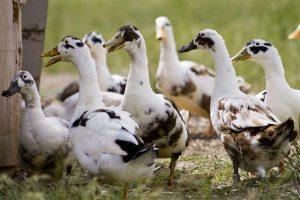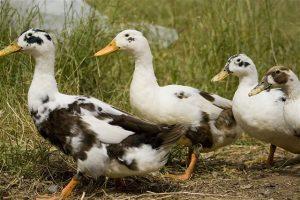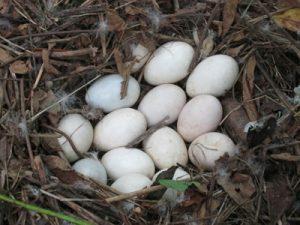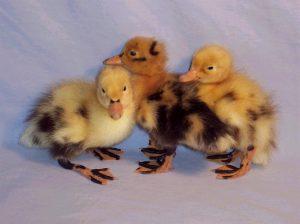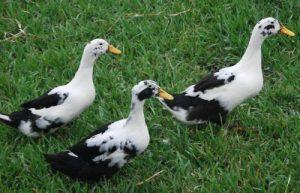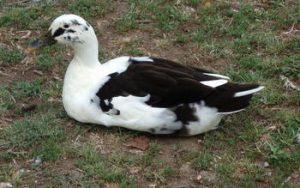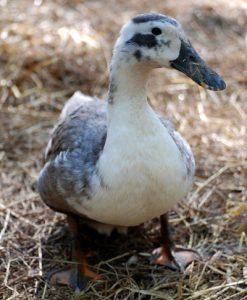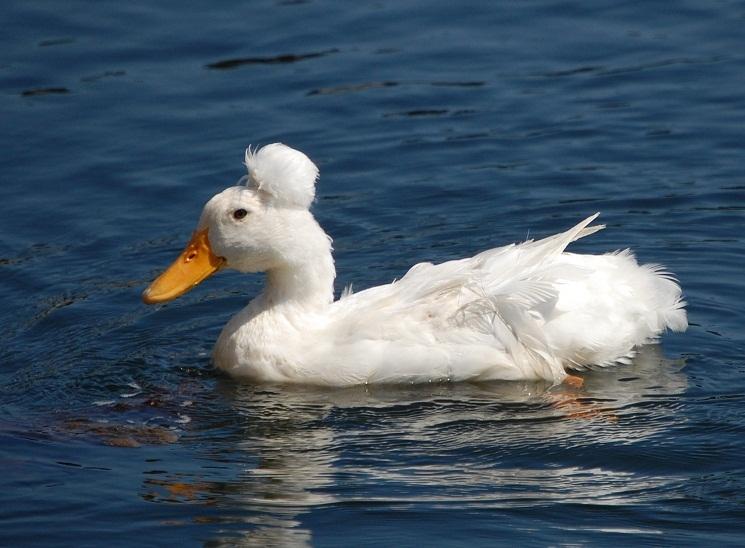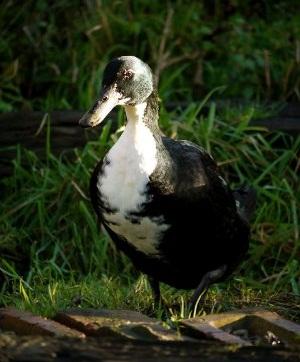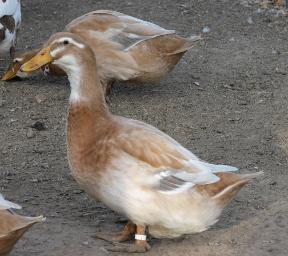Ancona Ducks
Ancona ducks are a breed of ducks that has its roots in Great Britain. Their calm and friendly temperament makes them excellent pets.
| Physical characteristics | Medium-sized oval head with medium-length neck that is narrow at the top and wider at the bottom; plumage under the eyes |
| Plumage/Feathers | Mottled, broken |
| Bills (Beaks) | Medium size, slightly concave |
| Color | Mainly black and white; however, comes in a variety of colors including blue and white, silver and white, chocolate and white, lavender and white, also tri-colored; yellow bills with dark green or black spots; orange legs and feet spotted with black or brown – the spots increases with age; ducklings are yellow with speckles or spots |
| Personality Traits | Calm, friendly, affectionate, hardy, adaptable, good foragers |
| Purpose | Eggs and meat |
| Eggs | 210-280 eggs per year; blue, white or cream in color weighing up to 70 g |
| Egg Size | Large |
| Incubation Period | Around 28 days |
| Lifespan | Up to 10 years |
| Height (size) | Medium |
| Weight | Drake: Around 2.8-3.1 kg Duck: Around 2.2-2.6 kg |
| Flying ability | Poor |
| Migration | Don’t migrate |
| Diet | Greens, insects, slugs, other arthropods |
| Status | Critically Endangered |
| Country of Origin | England |
History and Development
Ancona duck was developed in England in the early twentieth century and is believed to have been originated from the Belgian Huttegem Duck and the Indian Runner Duck breeds. The breed is similar to the Magpie duck which is its closest relative. The duck was raised in the United States for many decades and was displayed at major poultry shows. Although the breed is still rare, their population has been soaring up since 1984 when it is first made available to the public.
Egg and Meat Production
Ancona duck is a good layer and has been used for both eggs as well as meat. The breed grows fast and yields high quality meat. The meat is more flavorful and contains less fat compared to other Pekin ducks.
Interesting Facts
Ancona ducks possess water-proof feathers, i.e., when the duck dives underwater, its under-layer of feathers will remain completely dry. The duck has a special gland known as “Preen Gland” located near its tail that produces oil which spreads and overlay the outer coat of the feathers and thus makes them water-proof.


